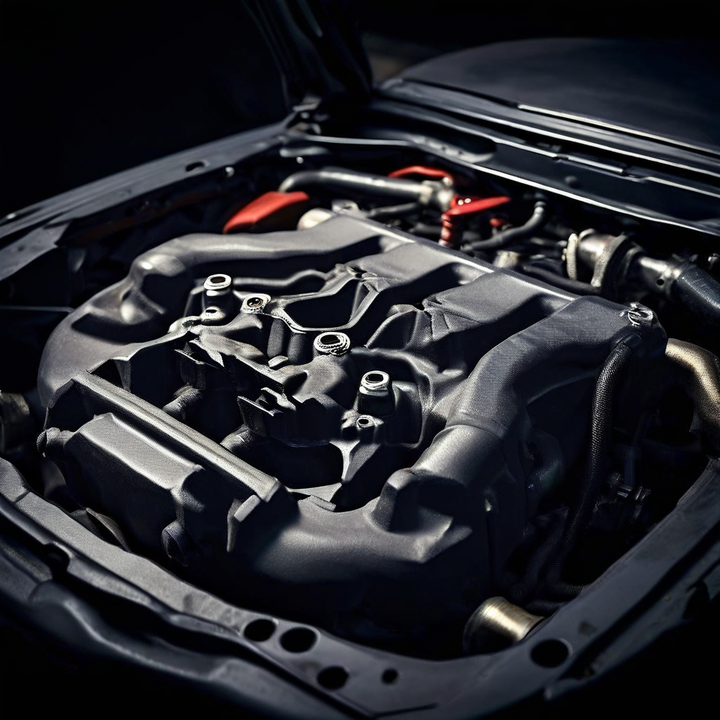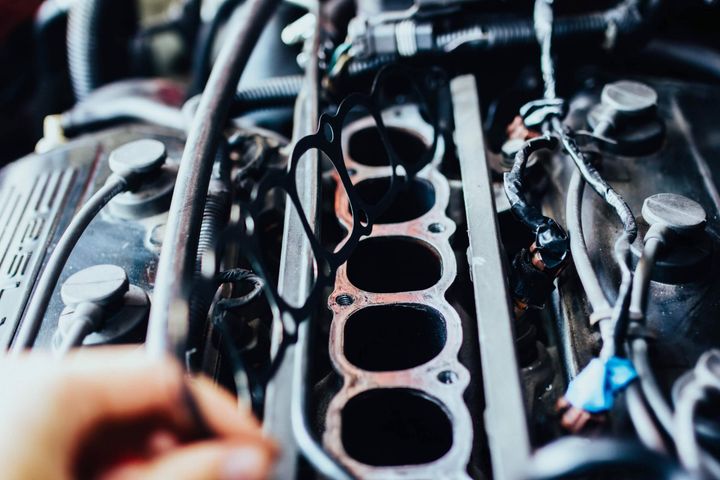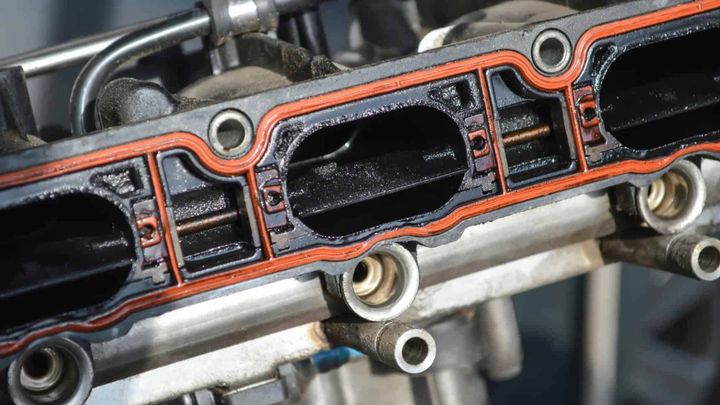


Maintaining your vehicle's engine is crucial for ensuring optimal performance, fuel efficiency, and longevity. One component that plays a vital role in this process is the intake manifold, responsible for distributing the air-fuel mixture to the cylinders. Over time, the intake manifold gasket can deteriorate, leading to various issues that necessitate replacement. This comprehensive guide delves into the intricacies of intake manifold replacement costs, covering everything from symptoms of a faulty gasket to the replacement process, cost breakdown, and maintenance tips.

The intake manifold gasket acts as a seal between the intake manifold and the engine block, preventing air, coolant, and oil leaks. When this gasket fails or becomes damaged, it can no longer maintain a proper seal, leading to several telltale signs that indicate the need for replacement.
A leaking intake manifold gasket can cause air or vacuum leaks, resulting in an improper air-fuel mixture and reduced engine performance. The engine's computer may detect this issue and trigger the check engine light, alerting you to a potential problem.
Here are some common signs of air/vacuum leaks:
| Sign | Description |
|---|---|
| Engine Misfiring | An inconsistent air-fuel mixture can cause the engine to misfire, resulting in a rough idle or loss of power. |
| Decreased Fuel Efficiency | Air leaks can disrupt the air-fuel ratio, leading to increased fuel consumption and reduced fuel economy. |
| Unusual Engine Noises | Whistling or hissing sounds may be heard, indicating air leaks in the intake system. |
If you notice coolant or oil leaks under your vehicle, it could be a sign of a breach in the intake manifold gasket's seal. These leaks can lead to further complications if left unaddressed, making it crucial to have them inspected and repaired promptly.
Common signs of coolant/oil leaks include:
Puddles of coolant or oil under the vehicle
Low coolant or oil levels
Sweet odor from the engine bay (coolant leak)
An inconsistent air-fuel mixture, caused by a faulty gasket, can result in engine misfires, rough idling, and decreased power output. This issue can be particularly noticeable during acceleration or when the engine is under load.
Symptoms of engine misfires and rough idling:
Rough or shaky idle
Hesitation or stumbling during acceleration
Loss of power or acceleration
Check engine light illuminated
The cost of replacing an intake manifold can vary significantly depending on several factors, including the vehicle's make and model, labor rates, and additional parts required.
The cost of a new intake manifold can range from $150 to $1,000, depending on the vehicle. Some vehicles may require additional components, such as gaskets, sealants, or fuel injector seals, which can add to the overall parts cost.
Here's a breakdown of common additional parts and their approximate costs:
| Part | Cost Range |
|---|---|
| Intake Manifold Gaskets | $20 - $100 |
| Sealants/Adhesives | $10 - $30 |
| Fuel Injector Seals | $20 - $80 |
| Vacuum Hoses/Fittings | $10 - $50 |
The labor cost for an intake manifold replacement typically ranges from $350 to $500. However, this can vary based on the mechanic's hourly rate and the complexity of the job.
Factors that can influence labor costs:
Mechanic's experience level
Accessibility of the intake manifold
Additional repairs required
Repair shop's labor rates
It's important to note that dealerships often charge higher rates compared to independent repair shops. According to Fixter data, customers can save around 30% on intake manifold gasket replacements by using their services instead of dealerships.
Additional factors that can affect the overall cost include:
Vehicle accessibility
Need for additional repairs
Mechanic's experience level
Warranty coverage
Replacing an intake manifold is a multi-step process that requires specialized knowledge and tools. Here's what you can expect:
The mechanic will first remove the old intake manifold, which may involve disconnecting various components such as fuel injectors, sensors, and hoses. This step is crucial to ensure proper access to the manifold and prevent damage to surrounding components.
The mating surfaces on the engine block and the new manifold must be thoroughly cleaned to ensure a proper seal. Any residue, gasket material, or debris can prevent a tight seal and cause leaks or other issues.
Cleaning methods may include:
Scraping or wire brushing
Using a gasket removal solvent
Sanding or grinding surfaces
The new intake manifold and gaskets are carefully installed, and all bolts are torqued to the manufacturer's specifications. Proper torque is essential to prevent leaks and ensure a secure fit.
During installation, the mechanic may also:
Apply sealants or adhesives as recommended
Replace any damaged or worn bolts or studs
Lubricate gaskets or sealing surfaces (if recommended)
Any disconnected components, such as fuel injectors, sensors, and hoses, are reconnected and secured. Proper routing and connections are crucial to ensure proper engine operation and prevent leaks or other issues.
The mechanic will perform final checks, such as checking for leaks and ensuring proper engine operation. This may involve:
Starting the engine and checking for leaks
Checking for proper idle and performance
Clearing any diagnostic trouble codes
Test driving the vehicle
While some experienced DIY enthusiasts may attempt an intake manifold replacement, it's generally recommended to have this job performed by a professional mechanic. The process can be complex and requires specialized tools, knowledge, and experience to ensure proper installation and avoid potential engine damage.
Professional mechanics have access to the necessary equipment, repair manuals, and training to perform the job correctly and efficiently. This includes:
Specialized tools for removing and installing components
Torque wrenches and angle gauges
Repair manuals with specific instructions and specifications
Diagnostic equipment for troubleshooting
Many repair shops offer warranties on their work, providing added peace of mind and protection against potential issues. Warranty coverage can include:
Parts and labor warranties
Guarantees on workmanship
Roadside assistance or towing services
To extend the lifespan of your new intake manifold and prevent future issues, consider the following maintenance tips:
Have your vehicle inspected regularly by a qualified mechanic to identify and address any potential issues early on. Regular inspections can help catch problems before they become more severe and costly.
Recommended inspection intervals:
Follow the manufacturer's maintenance schedule
Have the intake manifold inspected during routine services
Watch for any signs of leaks or other issues

When replacing components, use high-quality, manufacturer-recommended parts to ensure proper fit and performance. Using aftermarket or low-quality parts can lead to premature failure or compatibility issues.
Extreme temperatures, heavy loads, and aggressive driving can put additional stress on the intake manifold and other engine components. Try to:
Avoid excessive idling in extreme temperatures
Reduce aggressive acceleration and braking
Avoid overloading the vehicle with excessive weight
If you notice any symptoms of a failing intake manifold gasket, address the issue promptly to prevent further damage and costly repairs. Ignoring warning signs can lead to more severe and expensive problems down the line.
Replacing an intake manifold can be a significant expense, but it's a necessary repair to ensure the proper function and longevity of your vehicle's engine. By understanding the symptoms of a faulty intake manifold gasket, the associated costs, and the importance of professional repair, you can make informed decisions about maintaining your vehicle's health. Regular maintenance and prompt attention to any issues can help extend the lifespan of your intake manifold and prevent more costly repairs down the line.
Other signs include engine backfiring, black smoke from the exhaust, and a hissing sound coming from the engine bay.
No, it is not recommended to drive with a leaking intake manifold gasket as it can lead to further engine damage and potential safety hazards.
There is no set interval, but the gasket should be inspected during routine maintenance and replaced if showing signs of damage or deterioration.
If left unaddressed, a faulty gasket can cause vacuum leaks, improper air/fuel mixture, overheating, and potentially catastrophic engine failure.
Yes, specialized tools like a torque wrench, gasket scraper, and brake cleaner may be required for proper removal and installation.
In some cases, just the gasket may need replacement, but a new intake manifold may be required if the original is cracked or warped.
For an experienced mechanic, the replacement process can take 2-4 hours depending on the vehicle make and model.
Yes, on some vehicles the intake manifold can be difficult to access, requiring removal of additional components like the throttle body or fuel injectors.
Yes, proper safety measures should be taken when working with fuel systems and disconnecting electrical components and coolant lines.
No, it's important to use the recommended gasket sealant or adhesive specified by the vehicle manufacturer to ensure a proper seal.

Sarah isn't your average gearhead. With a double major in Mechanical Engineering and Automotive Technology, she dived straight into the world of car repair. After 15 years of turning wrenches at dealerships and independent shops, Sarah joined MICDOT to share her expertise and passion for making cars run like new. Her in-depth knowledge and knack for explaining complex issues in simple terms make her a valuable asset to our team.












